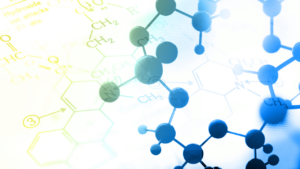Description:
Raman Spectroscopy is an analytical technique used to study molecular vibrations in materials by measuring the scattering of light when it interacts with a sample. It provides information about molecular structure, chemical composition, and bonding within a sample based on the vibrational modes of its constituent molecules.
Principle:
In Raman Spectroscopy, a laser beam is directed onto a sample, and a small fraction of the incident light undergoes inelastic scattering. The scattered light exhibits energy shifts corresponding to the vibrational energy levels of the molecules in the sample. The resulting Raman scattering spectrum provides information about molecular vibrations, allowing identification of functional groups and chemical bonds present.
Applications:
- Chemical Analysis: Used for qualitative and quantitative analysis of organic and inorganic compounds, identifying molecular structures, and detecting impurities or contaminants.
- Material Characterization: Applied in material science to investigate polymers, ceramics, semiconductors, and nanomaterials for structural and compositional analysis.
- Biomedical and Pharmaceutical Research: Utilized in biomedical research for studying biological samples, identifying biomolecules, and drug development.
- Forensic Science: Used for the analysis and identification of trace evidence, drugs, fibers, and pigments in forensic investigations.
Strengths:
- Chemical Specificity: Provides detailed information about chemical composition, including molecular structures, functional groups, and bonding configurations.
- Non-Destructive and Non-Invasive: Raman spectroscopy is a non-destructive technique that requires minimal to no sample preparation, and it can analyze samples in situ.
- Versatility: Applicable to a wide range of materials, including solids, liquids, gases, and biological samples.
- High Spatial Resolution: With modern instrumentation, Raman spectroscopy can achieve high spatial resolution, enabling microscopic analysis at the sub-micron level.
Limitations:
- Fluorescence Interference: Fluorescent materials can interfere with Raman signals, reducing the signal-to-noise ratio and complicating spectral interpretation.
- Low Sensitivity: Raman signals are inherently weak, requiring longer acquisition times or high laser power for some samples, which might cause sample damage.
- Water and Background Interference: Water and other background signals may overlap with Raman bands, affecting accuracy in aqueous or complex samples.
- Instrumentation Complexity and Cost: High-performance Raman spectrometers can be expensive, and interpreting complex spectra may require expertise.
In summary, Raman Spectroscopy is a valuable technique for identifying molecular structures, analyzing chemical compositions, and characterizing materials across various fields. Its strengths include chemical specificity, non-destructiveness, versatility, and high spatial resolution. However, limitations include fluorescence interference, low sensitivity for certain samples, background signals, and instrumentation complexity. Advances in technology continue to address many of these limitations, making Raman spectroscopy increasingly valuable in research, industry, and analytical laboratories.


 SAXS – Small Angle X-ray Scattering
SAXS – Small Angle X-ray Scattering